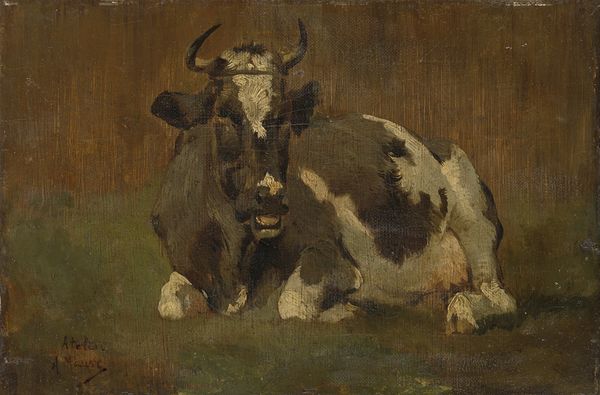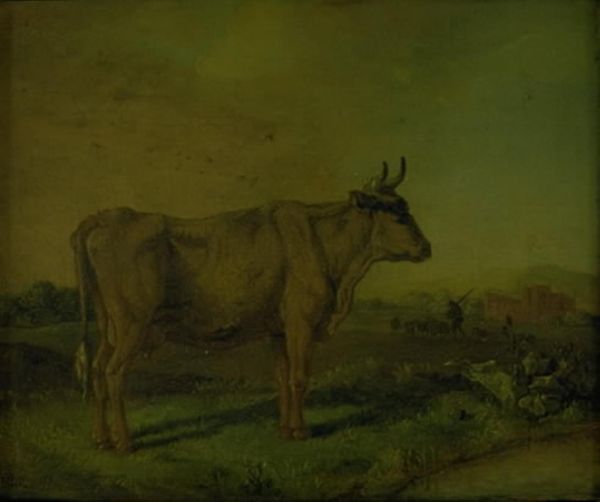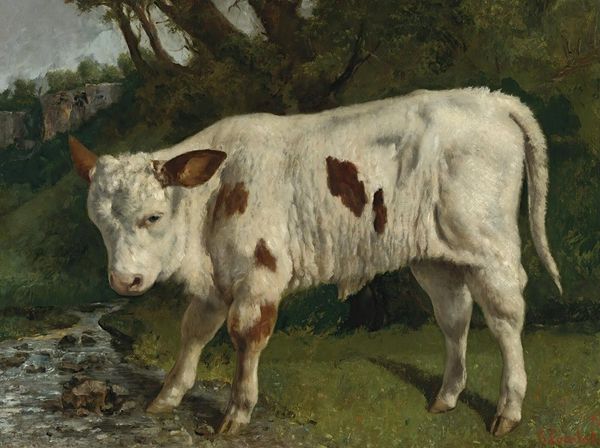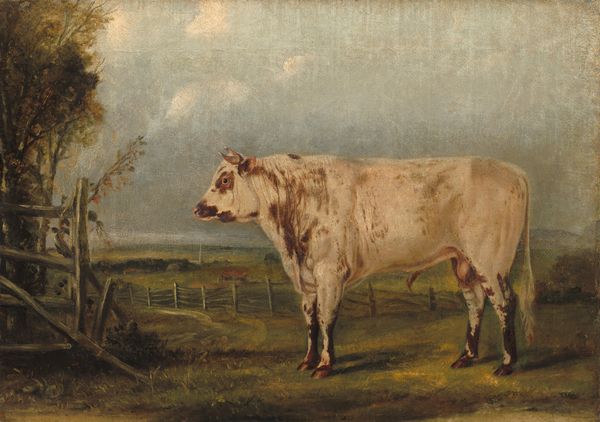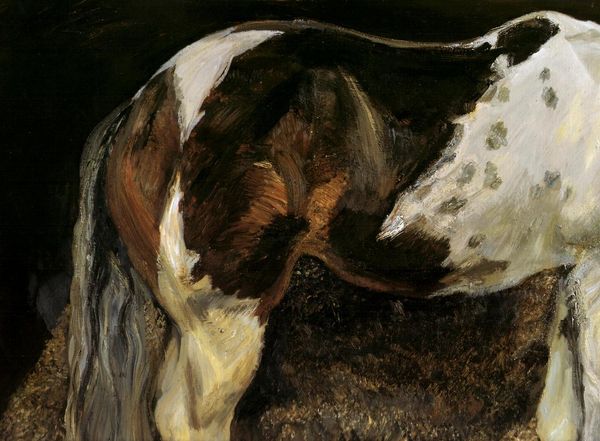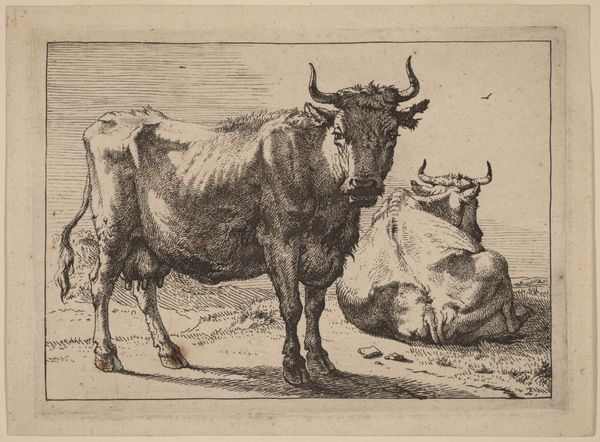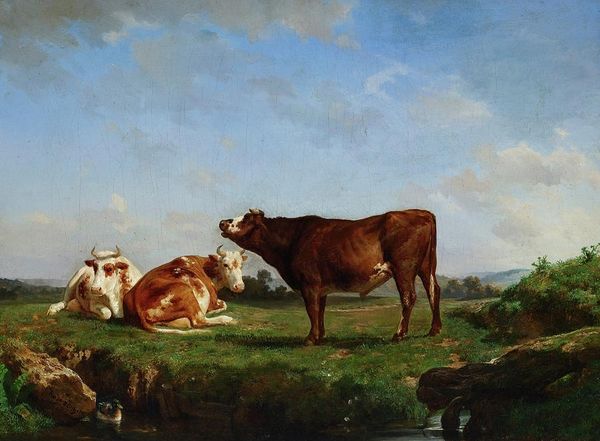
painting, oil-paint
#
portrait
#
animal
#
painting
#
oil-paint
#
oil painting
#
romanticism
#
genre-painting
#
history-painting
#
realism
Copyright: Public Domain: Artvee
Curator: Standing before us is James Ward's "Portraits of Two Extraordinary Oxen, the Property of the Earl of Powis," an oil painting dating back to 1814. It presents these beasts within an intriguing architectural space. Editor: My immediate impression is the overwhelming bulk of them; they’re massive! The artist has captured such weight and presence against this rather somber backdrop. Is that some sort of ruin behind them? Curator: Indeed. The choice of setting is crucial, it provides us some sense of the wealth and standing associated with owning livestock like this. Notice how the artist has used oil paints to detail their hides, creating a tangible texture that speaks to a very deliberate crafting of status through this work. Editor: The horns! What potent symbolism. They rise upward, almost impossibly large, conveying strength and virility. Consider how the dark and light patterns on their bodies interact – a yin and yang, a primal force contained, or perhaps a resource about to be tapped? Curator: Yes, and I am quite drawn to consider the production cycle that makes this image. Ward likely received a commission directly from the Earl. How much were the farm laborers involved in tending these specific animals paid, what were their working conditions like? Did this commission affect their economic standing in the wider community? Editor: It does rather humanize these grand symbols. Those arches and pillars aren't just structural supports, they're a cultural stage where humans project meaning. These oxen, presented with such visual authority, became emblematic figures of a certain British power and its association to land cultivation, agriculture, and empire. Curator: The artist's technique adds to the spectacle, manipulating light to enhance the sense of volume, turning these farm animals into things of value, to be seen almost as historical actors, subjects in their own right and within a economic transaction and moment. Editor: Ultimately, the painting is an attempt to harness this wild, brute power, and imbue it with symbolic meaning – a testament to not just these animals' impressive size, but the enduring, if problematic, association between agrarianism and societal power in a specific era of British history. Curator: Absolutely, we can analyze these portraits of extraordinary oxen in the context of production, of agricultural and economic labor within society.
Comments
No comments
Be the first to comment and join the conversation on the ultimate creative platform.
